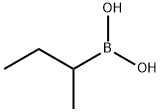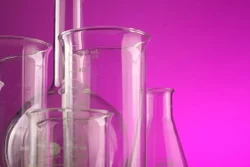Butyryl chloride
Synonym(s):Butyryl chloride
- CAS NO.:141-75-3
- Empirical Formula: C4H7ClO
- Molecular Weight: 106.55
- MDL number: MFCD00000752
- EINECS: 205-498-5
- SAFETY DATA SHEET (SDS)
- Update Date: 2025-09-25 17:15:13

What is Butyryl chloride?
Chemical properties
Butyryl chloride is a colorless to light yellow liquid with a strong pungent odor. It undergoes vigorous hydrolysis with water; decomposes in water; soluble in almost aprotic organic solvents. It is used as an intermediate for organic synthesis for the preparation of pharmaceuticals, agrochemicals, dyes, cellulose esters, and peroxide compounds.
The Uses of Butyryl chloride
Butyryl chloride is used as an intermediate for the synthesis of active pharmaceutical ingredients benzoyl peroxide, t-butyl perbenzoate, and benzophenone. It is also used as an acylation reagent. Further, it is used in the preparation of peroxides such as benzoyl peroxide, benzophenone and t-butyl perbenzoate. In addition to this, it is involved in the preparation of chromones and antiproliferative agents.
Butyryl chloride has been used to esterify wood meal dissolved in the ionic liquid, 1-butyl-3-methylimidazolium chloride.
General Description
A clear colorless liquid with a sharp odor. Slightly denser than water. Flash point near 20°F. Severely irritates skin, eyes, and mucous membranes. Used to make other chemicals.
Air & Water Reactions
Highly flammable. Fumes in air. Decomposes exothermically in water to give corrosive hydrochloric acid.
Reactivity Profile
Butyryl chloride slowly dissolves in water with decomposition and formation of a weakly acidic solution. May react vigorously or explosively if mixed with diisopropyl ether or other ethers in the presence of trace amounts of metal salts [J. Haz. Mat., 1981, 4, 291].
Health Hazard
Extremely destructive to the mucous membranes, upper respiratory tract, eyes, and skin. Inhalation may cause death as a result of spasm, inflammation and edema of the larynx and bronchi, chemical pneumonitis, and pulmonary edema. Symptoms of exposure include burning sensation, coughing, wheezing, laryngitis, shortness of breath, headache, nausea, and vomiting.
Fire Hazard
Special Hazards of Combustion Products: Emits toxic fumes of chlorine gas
Flammability and Explosibility
Flammable
Purification Methods
Check IR to see if there is a significant peak at 3000-3500 cm-1 (br) for OH. If OH is present then reflux with less than one mole equivalent of SOCl2 for 1hour and distil directly. The fraction boiling between 85-100o is then refractionated at atmospheric pressure. Keep all apparatus free from moisture and store the product in sealed glass ampoules under N2. LACHRYMATORY; handle in a good fume hood. [Hefferich & Schaeffer Org Synth Coll Vol I 147 1941, Beilstein 2 IV 803.]
Properties of Butyryl chloride
| Melting point: | −89 °C(lit.) |
| Boiling point: | 102 °C(lit.) |
| Density | 1.026 g/mL at 25 °C(lit.) |
| vapor density | 3.7 (vs air) |
| vapor pressure | 39 hPa (20 °C) |
| RTECS | EM0595000 |
| refractive index | n |
| Flash point: | 71 °F |
| storage temp. | Store below +30°C. |
| solubility | Miscible with ether. |
| form | Liquid |
| color | Clear slightly yellow |
| Odor | pungent odor |
| explosive limit | 2.5-7.3%(V) |
| Water Solubility | decomposes |
| FreezingPoint | -89℃ |
| Sensitive | Moisture Sensitive |
| Merck | 14,1598 |
| BRN | 605395 |
| CAS DataBase Reference | 141-75-3(CAS DataBase Reference) |
| NIST Chemistry Reference | Butanoyl chloride(141-75-3) |
| EPA Substance Registry System | Butanoyl chloride (141-75-3) |
Safety information for Butyryl chloride
| Signal word | Danger |
| Pictogram(s) |
 Flame Flammables GHS02  Corrosion Corrosives GHS05  Skull and Crossbones Acute Toxicity GHS06  Environment GHS09 |
| GHS Hazard Statements |
H225:Flammable liquids H302:Acute toxicity,oral H314:Skin corrosion/irritation H331:Acute toxicity,inhalation H410:Hazardous to the aquatic environment, long-term hazard |
| Precautionary Statement Codes |
P210:Keep away from heat/sparks/open flames/hot surfaces. — No smoking. P273:Avoid release to the environment. P280:Wear protective gloves/protective clothing/eye protection/face protection. P303+P361+P353:IF ON SKIN (or hair): Remove/Take off Immediately all contaminated clothing. Rinse SKIN with water/shower. P305+P351+P338:IF IN EYES: Rinse cautiously with water for several minutes. Remove contact lenses, if present and easy to do. Continuerinsing. |
Computed Descriptors for Butyryl chloride
| InChIKey | DVECBJCOGJRVPX-UHFFFAOYSA-N |
Butyryl chloride manufacturer
JSK Chemicals
New Products
4,4-Difluoropiperidine hydrochloride tert-butyl 9-methoxy-3-azaspiro[5.5]undecane-3-carboxylate Indole Methyl Resin N-Isopropylurea N,N-Dicyclohexylcarbodiimide(DCC) MELDRUMS ACID 5-METHYLISOXAZOLE-4-CARBOXYLIC ACID Magnessium Bis glycinate Zinc ascorbate 1-bromo-2-butyne 2-acetamidophenol 9(10H)-anthracenone Erythrosin B, 4-Piperidinopiperidine 2-((4-morpholinophenylamino) (methylthio) methylene) malononitrile 2,4-dihydroxybenzaldehyde 3-(4-morpholinophenylamino)-5-amino-1H-pyrazole-4-carbonitrile Methyl 2-methylquinoline-6-carboxylate 2,6-dichloro-4-nitropyridine 4-Bromo-2-chlorobenzonitrile 2-(benzylamino)acetic acid hydrochloride 4-(tert-Butoxycarbonylamino)but- 2-ynoic acid 3,4-dihydro-2H-benzo[b][1,4]dioxepine 1-Phenyl-1-cycloprppanecarboxylicacidRelated products of tetrahydrofuran








You may like
-
 Butyryl Chloride CAS 141-75-3View Details
Butyryl Chloride CAS 141-75-3View Details
141-75-3 -
 Butyryl chloride, 98% CAS 141-75-3View Details
Butyryl chloride, 98% CAS 141-75-3View Details
141-75-3 -
 Butyryl chloride CAS 141-75-3View Details
Butyryl chloride CAS 141-75-3View Details
141-75-3 -
 Butyryl chloride 99% CAS 141-75-3View Details
Butyryl chloride 99% CAS 141-75-3View Details
141-75-3 -
 Butyryl ChlorideView Details
Butyryl ChlorideView Details
141-75-3 -
 N-Butyryl Chloride Cas no 141-75-3View Details
N-Butyryl Chloride Cas no 141-75-3View Details
141-75-3 -
 N Butyryl ChlorideView Details
N Butyryl ChlorideView Details
141-75-3 -
 N-Butyryl ChlorideView Details
N-Butyryl ChlorideView Details
141-75-3
